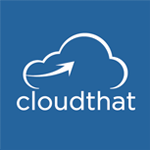- Consulting
- Training
- Partners
- About Us
x
In my previous article on “ESP8266 Connectivity with Azure IoT Hub” we have seen, how to connect IoT device with Azure IoT Hub. We also discussed about how to configure and connect ESP8266 with Azure IoT Hub for hyper-scale messaging in a secured way.
We have data from different IoT devices on Cloud, but it is futile unless we can process that data and present it in some way. When we have tremendous number of IoT devices generating massive unstructured data every second, then you will eventually end up having pile of data with no meaning. Therefore, it is important to process that data and generate some meaningful information from it. As we are in Cloud Computing era, we have some superb services to help us process and present that data. There are many such services out there, but if we talk specifically about Microsoft Services, then we can use Azure Stream Analytics for processing and Microsoft Power BI for presenting data.
So, what are these services?
Azure Stream Analytics helps in streaming millions of events per second in real time and allow us to do processing over that data with great reliability and performance. To know more about Azure Stream Analytics, you can refer the article on ‘Azure Stream Analytics’ written by Arzan Amaria.
Microsoft Power BI which we are going to use for presenting the processed data is a SaaS Tool and is a collection of services and features to visualize, share and collaborate data.
Now that we know about Azure Stream Analytics and Microsoft Power BI, let’s see how to create connection between IoT Hub which will receive data from different IoT devices, then fetch and process that data using Stream Analytics and finally visualize & present data using Power BI.
Following are the steps to do the same:

Data will come as Data Stream from IoT Hub


|
1 2 3 4 5 6 |
SELECT Id, Celsius, Humidity, hPa, System.Timestamp AS Timestamp INTO [DeviceBI] FROM [DeviceInputStream] |

There are many other things which you can do using Stream Analytics and Power BI by processing the data in different ways and creating different type of graphs.
Interested to learn more about IoT? We conduct following BootCamps for IoT:
Feel free to ask questions or provide your valuable suggestions as comments below. Please share if you like the article.
|
Voiced by Amazon Polly |

CloudThat is a leading provider of cloud training and consulting services, empowering individuals and organizations to leverage the full potential of cloud computing. With a commitment to delivering cutting-edge expertise, CloudThat equips professionals with the skills needed to thrive in the digital era.
Our support doesn't end here. We have monthly newsletters, study guides, practice questions, and more to assist you in upgrading your cloud career. Subscribe to get them all!
Vishal Gor
Nov 27, 2017
Really informative blog, thanks for sharing.